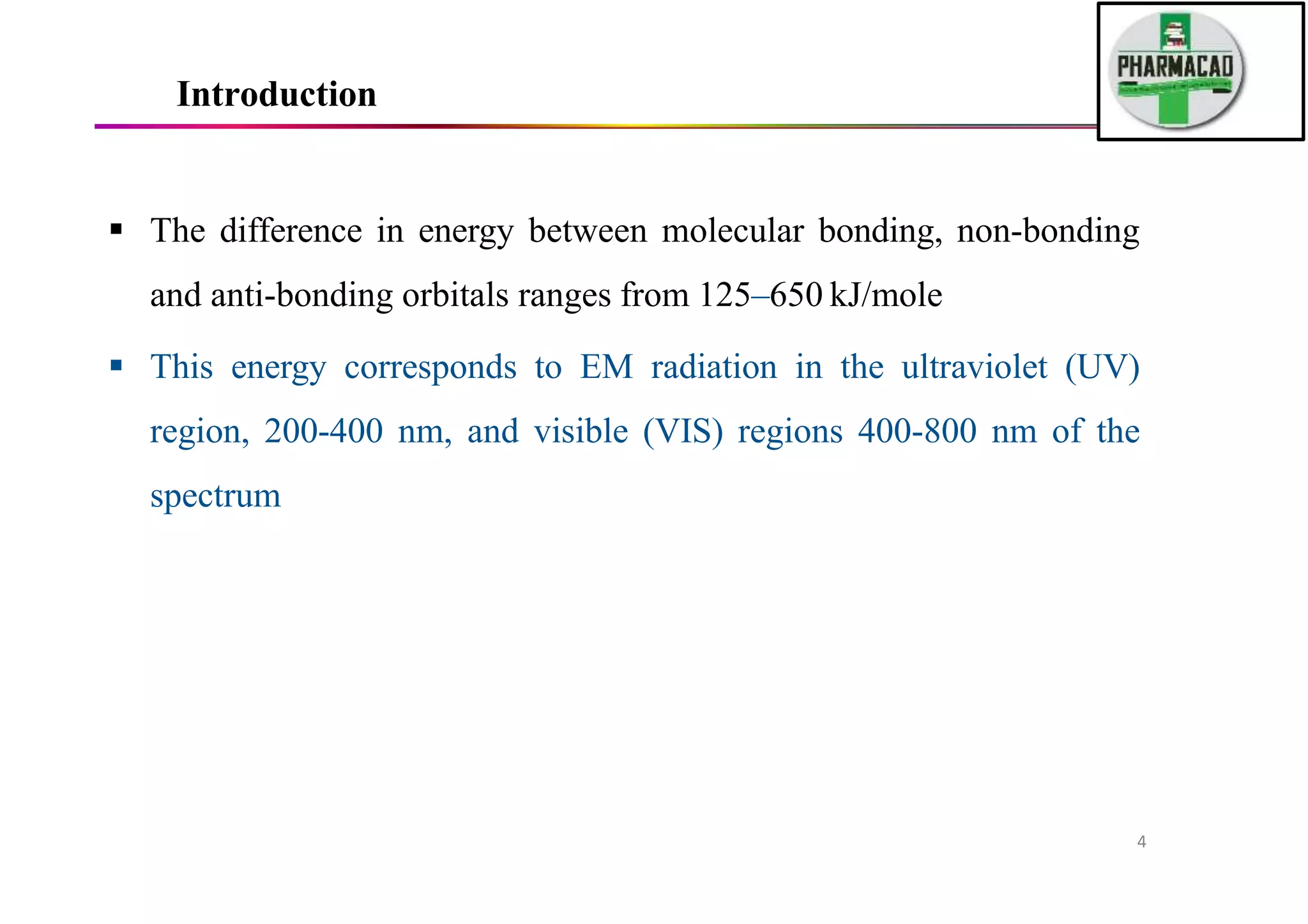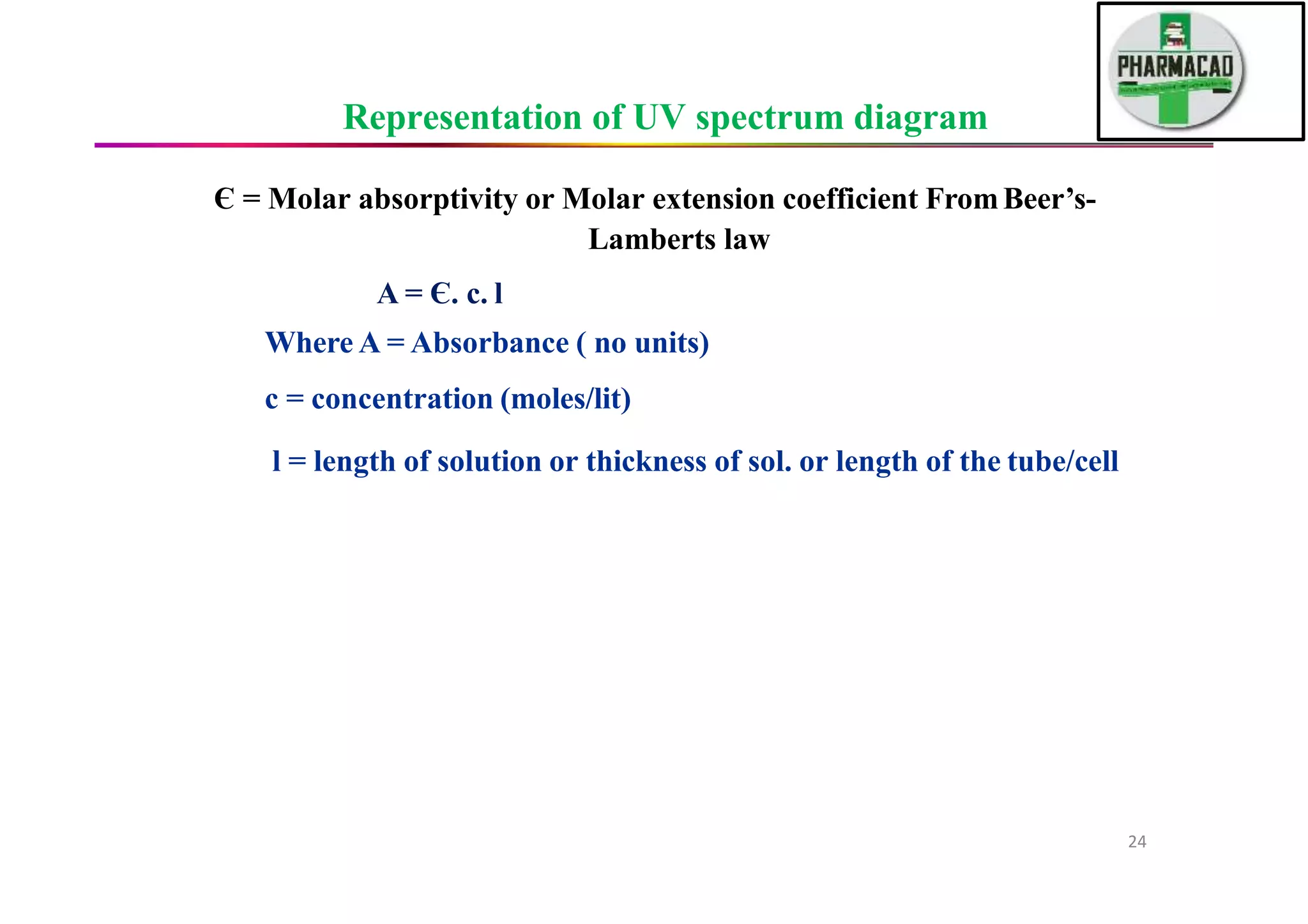The document provides an overview of UV-visible spectroscopy. It discusses how UV-visible spectroscopy works by measuring absorption or emission of electromagnetic radiation by molecules. It describes the instrumentation used in UV-visible spectroscopy including light sources, sample handling using cuvettes, and detectors. It also covers concepts like chromophores, transitions between molecular orbitals, and selection rules. Applications discussed include analysis of functional groups, determination of structure and configuration of compounds.








































